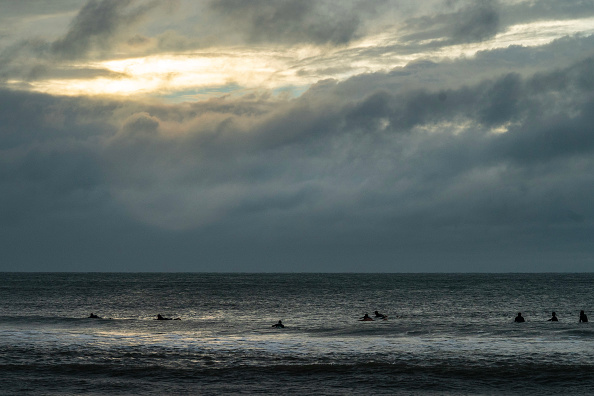Hurricane Beryl barreled toward Jamaica as a powerful Category 4 storm on Wednesday, after flattening homes and devastating agriculture on smaller islands in the eastern Caribbean, killing at least three people.
At around 0600 GMT, the hurricane was about 250 miles (400 km) east-southeast of the Jamaican capital of Kingston, according the U.S. National Hurricane Center (NHC),packing maximum sustained winds of 145 miles per hour (230 kph).
“Beryl is expected to bring life-threatening winds and storm surge to Jamaica on Wednesday and the Cayman Islands Wednesday night and Thursday,” NHC said in an advisory. A hurricane warning is in effect for both places.
In Haiti’s capital Port-au-Prince, which is in the grips of entrenched gang violence and an ongoing humanitarian crisis, strong winds took residents by surprise on Tuesday afternoon.
The country’s southwestern peninsula could get 4-8 inches (10-20 cm) of rain, with as much as 12 inches in some places, the NHC said. New Haitian Prime Minister Garry Conille warned residents to take precautions and stay alert.
The unusually early hurricane, whose rapid strengthening scientists said was likely fueled by human-caused climate change, is expected to still be a hurricane when it passes near Jamaica and the Cayman Islands later this week.
Beryl, the 2024 Atlantic season’s first hurricane and the earliest storm on record to reach the highest category on the Saffir-Simpson Scale, felled power lines and unleashed flash floods across smaller islands.
IMMENSE DESTRUCTION
The storm hit St. Vincent and the Grenadines especially hard, according to Prime Minister Ralph Gonsalves.
“The hurricane has come and gone, and it has left in its wake immense destruction,” he said. On one island in the Grenadines archipelago, Union Island, 90% of homes had been “severely damaged or destroyed,” he said.
The prime minister confirmed one death, and said more fatalities could be confirmed in the coming days.
In a video briefing on Tuesday, Grenada’s prime minister, Dickon Mitchell, stressed that Carriacou and Petite Martinique, two of the three islands that make up the country, bore the brunt of the natural disaster, calling the situation “Armageddon-like”.
“There is no power. There is almost complete destruction of homes and buildings,” he said, citing impassable roads due to downed power lines and destroyed fuel stations crimping supplies.
Mitchell said at least two deaths were attributed to the impact of Beryl so far.
Fallen trees and debris scattered the streets after the storm, which Mitchell said had totally destroyed the mangroves on Carriacou, leaving “literally no vegetation” and destroying the island’s agriculture.
The Miami-based U.S. hurricane center estimates that the massive weather system is moving toward the west-northwest at a speed of 22 mph (35 kph).
In Fort-de-France on the French Caribbean island of Martinique, north of St. Vincent, video shared on social media showed flooded streets and locals attempting to clear away debris.
In addition to Haiti’s southern coast, the NHC also declared a hurricane watch for Mexico’s Yucatan peninsula, dotted with beach resorts popular with tourists.
Ahead of the storm’s approach expected Thursday night, Mexico’s defense ministry said the army, air force, and national guard had activated emergency response protocols in the three Yucatan states, with 120 shelters opened and nearly 4,900 troops on guard on the peninsula.
The unusually early timing and rapid intensification of the storm is partly due to warmer ocean temperatures, scientists say.
Climate change probably contributed to Beryl’s early formation and the speed with which it intensified, according to scientists surveyed by Reuters, which could provide an unsettling preview of future storms.
Global warming has helped push temperatures in the North Atlantic to record highs, said Christopher Rozoff, an atmospheric scientist at the U.S.-based National Center for Atmospheric Research. The warmer waters cause more evaporation, which fuels more intense hurricanes featuring higher wind speeds, he said.
Beryl jumped from a Category 1 to a Category 4 storm in under 10 hours, according to Andra Garner, a Rowan University meteorologist. That marked the fastest intensification ever recorded before September, the peak of the Atlantic hurricane season, she said.
(Reuters)




















